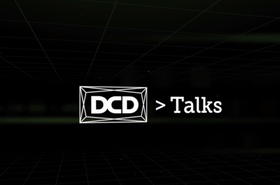George Rockett, CEO of DCD sat down with Steve Carlini, Vice President of Innovation and Data Center at Schneider Electric, to talk about 5G, edge and the impact of COVID-19. As part of our premiere podcast series, DCD>Talks aims deep dive into the imperative operations across the data center industry. Steve Carlini is an established, industry speaker and expert at one of the largest organizations operating in the industry.
Carlini is part of the World Economic Forum’s 5G program, a collaboration across multiple disciplines and stakeholders across the globe who have been tasked with formulating the value propositions that will drive 5G adoption. Schneider’s broader role in this process focuses on process automation, and specifically Carlini’s expertise: data centers. As Carlini mentions, in order for 5g to meet performance specifications, there will need to be local edge data centers.
Because of the architecture of 5G, there will be approximately three or four times as many edge data centers. These won’t always be associated with mobile towers either, they may be in basements, parking lots and other viable urban locations. Additionally, the special project ‘international 5G accelerator program’ looks at the factors that will accelerate 5G, but also the impacts of COVID-19 and the outlook from here. Finally, stimulus packages that will become available may also push the 5G rollout.
So where are we?
Carlini has clear sight to the current situation and future trends impacting the rollout of 5G. He says that 5G rollout has been slowed down from a standards perspective. The group, 3GBP formed by industry stakeholders to deliver standards for 3G has remained intact. However, the impacts of COVID-19 have delayed their ability to deliver the necessary new standards for 5G.
What’s your wifi password?
Carlini talks about how Wifi and 5G experts are collaborating. Unlike existing networks, there are hopes for seamlessness between wifi, IoT and 5G applications. This seamlessness would drastically improve user experience, and in some cases, may be absolutely vital for some applications. This also has the opportunity to connect different technologies to provide more immersive experiences, and more sophisticated use of physical infrastructure.
Office buildings, interestingly, will be a main driver for the next generation of wifi. The reliance of businesses on wifi in their buildings will drive further improvements in this space. Carlini hopes that 5G and wifi 6 will co-exist, and allow better integration of technologies.
Cloud, the edge and more strategies
Many hope that the extended cloud will improve edge capacity. In order to do this, cloud stacks will need to be moved closer and closer to users to facilitate edge compute. The next steps for some organizations are moving these networks almost on-premise, or as close as possible to where users are. There are three main drivers for this Carlini says: latency, capability and data privacy. Additionally, it will also allow you to manage hardware and software in edge data centers yourself. This gives you great flexibility and control over your infrastructure.
Carlini says that one of the things COVID-19 has done is accelerate migration to cloud-based strategies, because people needed to understand what was happening in data centers without having boots on the ground.
In the future, a resilient edge will be extremely important, and it will need to be integrated with the cloud. This will provide you with more flexibility and capability than previously available.
Tune into the full chat between George and Steve with the free podcast series, DCD>Talks.

